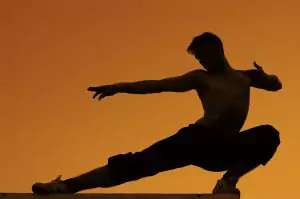 The martial arts, being systems and traditions of combat, are not exclusive to Asian countries in their history. In fact, though Asian countries had a significant impact on martial arts, it was not until much later from its origins that martial arts took hold and spread through Asian countries. The first record related to martial arts is in Africa. This essay will discuss the timeline of martial arts in the following paragraphs in detail.
The martial arts, being systems and traditions of combat, are not exclusive to Asian countries in their history. In fact, though Asian countries had a significant impact on martial arts, it was not until much later from its origins that martial arts took hold and spread through Asian countries. The first record related to martial arts is in Africa. This essay will discuss the timeline of martial arts in the following paragraphs in detail.

✅ AI Essay Writer ✅ AI Detector ✅ Plagchecker ✅ Paraphraser
✅ Summarizer ✅ Citation Generator
An exact timeline is difficult to compose, though with ample evidence, we can say how the general trend went. The earliest known instances and usage of martial arts comes from art, literature, and artifacts. The oldest living artifact connected to martial arts is dated as far as 3400 BC, which was an ancient Egyptian painting that displays a struggle (Czerwińska-Pawluk Iwona, and Żukow Walery). This fresco showed military training at Beni Hassan, an ancient Egyptian cemetery site. The type of martial arts practiced in this area was primarily wrestling and dueling with sticks. However, evidence has been found that the soldiers sparred with spears, shields, clubs, axes, poleaxes, flails, bows, slings, and various swords.
However, the spear has been in use since the Lower Paleolithic (dating back to 3.3 million years) and is still an important piece of weaponry. The bow came about in the Upper Paleolithic (dating back to 50,000 years ago), and gradually was substituted by the crossbow. Bladed weapons began to appear in the Neolithic, such as the stone axe (starting 12,000 years ago), and were refined and diversified in the Bronze Age (around 3,300 BC) with various kinds swords, daggers, and other blades (“History of the Spear”).
But getting back on the general timeline, after Egyptians were sparring with wrestling and a variety of weapons, it can be seen that the ancient Babylonians were creating reliefs and literature based on martial struggle around 3000 BC. Also, around the same time in Vietnam, drawings and sketches were made about 2879 about fighting with spears, swords, sticks, and bows (Czerwińska-Pawluk Iwona, and Żukow Walery). However, hardly any background detail is known about these pieces of art.
The next significant artifact that points to the development of martial arts is from China. At 2698 BC, the Yellow Emperor was recorded to be a general who wrote a great deal about martial arts before becoming the leader of China. As ChinaCulture.org states, “According to tradition, the Yellow Emperor (Huangdi, traditional date of ascension to the throne 2698 BCE) introduced the earliest forms of martial arts to China. He allegedly developed the practice of jiao di or horn-butting and utilized it in war” (“History of Chinese Martial Arts”). However, despite his lengthy treatises, the historicity of the events and practices cannot be fully validated.
The following marker in the history of martial arts was the Epic of Gilgamesh. It is a poem from ancient Mesopotamia, written around 2100 BC. It is sometimes regarded as the earliest surviving work of literature. According to History on the Net, “The Epic of Gilgamesh” conveys many themes important to our understanding of Mesopotamia and its kings. Themes of friendship, the role of the king, enmity, immortality, death, male-female relationships, city versus rural life, civilization versus the wild and relationships of humans and gods resound throughout the poem. Gilgamesh’s many challenges throughout the poem serve to mature the hero and make him a good king to his people” (“The Epic of Gilgamesh”). In this long poem, many fights and duels among the characters were described and have a place in actual history.
In terms of epicness, the Olympic Games of Greece are hard to find a comparison. The Olympic Games began in 776 BC, and early events included wrestling, boxing, and pankration (“The Penn Museum”). A similar philosophy with the modern Olympics was held in its ancient form, with warring regions putting aside their conflicts while engaging in the Games.
There is much more detail and history that could added to this account, but this is the most basic timeline of martial arts. The earliest records and/or signs of martial arts is from ancient Egypt, around 3400 BC with figurative art and painting displaying military training. However, remains of spears, blades, and other weapons were dated before this time. From Africa, martial arts travelled to Babylonia, and eventually sprung up in Asia, starting from Vietnam, and finally ended up in Europe in Greece with the Olympic Games.
Works Cited
Czerwińska-Pawluk Iwona, and Żukow Walery. Humanities Dimension of Physiotherapy, Rehabilitation, Nursing and Public Health. Radom University, 2011.
“History of the Spear.” About History, 23 Mar. 2018, about-history.com/history-of-the-spear/.
“History of Chinese Martial Arts.” Social Organizations in China, en.chinaculture.org/chineseway/2012-08/07/content_438086.htm.
“The Epic of Gilgamesh.” History, 2 July 2018, www.historyonthenet.com/the-epic-of-gilgamesh.
“The Penn Museum.” Column, Penn Museum, www.penn.museum/sites/olympics/olympicorigins.shtml.
Follow us on Reddit for more insights and updates.
Comments (1)
Welcome to A*Help comments!
We’re all about debate and discussion at A*Help.
We value the diverse opinions of users, so you may find points of view that you don’t agree with. And that’s cool. However, there are certain things we’re not OK with: attempts to manipulate our data in any way, for example, or the posting of discriminative, offensive, hateful, or disparaging material.





Identify any four aspects of martial art as discussed by the author